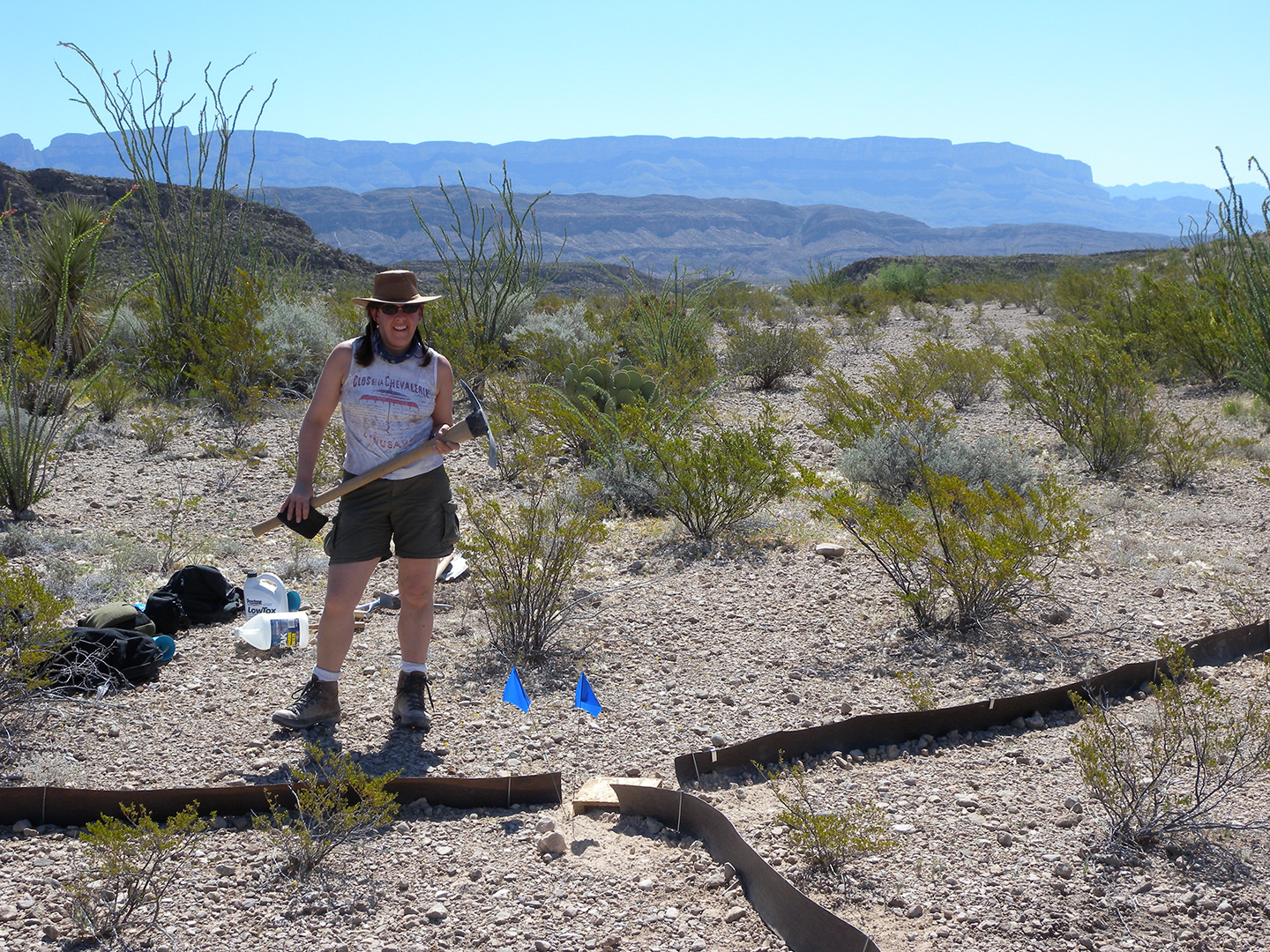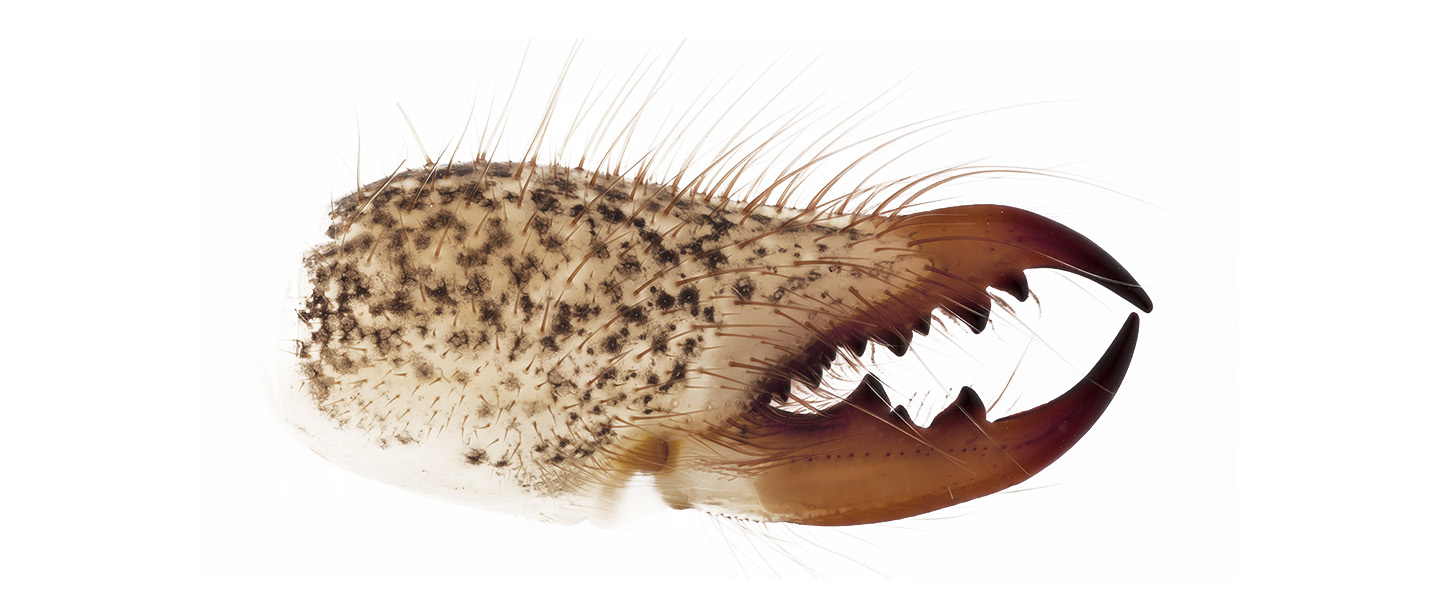Dr. Paula Cushing is senior curator of invertebrate zoology. She began her position in 1998. She received her PhD from the University of Florida in 1995. She is an evolutionary biologist who studies evolutionary patterns and processes in arachnids (spiders and their kin). Her research focuses on the diversity of spiders in the Rocky Mountain/Great Plains ecoregion (the Colorado Spider Survey). She is also involved with projects exploring the taxonomy, systematics, biogeography, and natural history of spiders, scorpions, and solifuges. She has published on myrmecophilic spiders (spiders that live inside ant colonies) and their evolutionary relationship with the ant hosts. She has done research in all the deserts of the western United States, in Florida, Virginia, Tennessee, Kentucky, Mexico, Puerto Rico, Panama, and India. Paula’s current research focus is on arachnids in the order Solifugae, commonly called camel spiders. She and her students are exploring the systematics, taxonomy, morphology, and behavior of camel spiders in the North American family Eremobatidae. She has served as the co-advisor on the graduate committees of master of science and PhD students at various universities. She is also coordinating the collections and research efforts of several Museum volunteers. Paula is very involved with the American Arachnological Society and the International Society of Arachnology.
See her full article list on Research Gate.
Featured Publications
Cushing, P.E., González-Santillán, E. 2018. Capturing the elusive camel spider (Arachnida: Solifugae): effective methods for attracting and capturing solifuges," The Journal of Arachnology, 46(2), 384-387. DOI: 10.1636/JoA-S-17-067.1
Cushing, P.E., Brookhart, J.O. 2016. Nine new species of the Eremobates scaber species group of the North American camel spider genus Eremobates (Solifugae, Eremobatidae). Zootaxa. 4178: 4. DOI: 10.11646/zootaxa.4178.4.3
Cushing, P.E., Channiago, F. Brookhart, J.O. 2018. Revision of the camel spider genus Eremocosta Roewer and a description of the female Eremocosta gigas Roewer (Arachnida, Solifugae). Zootaxa. 4402: 3. DOI: 10.11646/zootaxa.4402.3.2
Cushing, P.E., Graham, M.R., Prendini, L., Brookhart, J.O. 2015. A multilocus molecular phylogeny of the endemic North American camel spider family Eremobatidae (Arachnida: Solifugae). Molecular Phylogenetics and Evolution. 92. DIO: 10.1016/j.ympev.2015.07.001
Amazing Arachnids
While some people might run the other way at the sight of a spider, Dr. Paula Cushing gets excited. As the curator of invertebrate zoology, Dr. Cushing’s research focuses on arachnids, a class of eight-legged animals that includes spiders, scorpions, and camel spiders, who are neither camel, nor spider!
What’s so amazing about arachnids? Find out how these eight-legged wonders adapt, behave, and even help humans with this live look at invertebrate biology.
Women in Science
A Conversation with Dr. Paula Cushing, PhD
The Denver Museum of Nature & Science (DMNS) is home to many amazing Women in Science. From anthropology to food services, guest services, leadership and much more, these individuals help the Museum and its guests learn, grow and get excited about science!
One of these awesome individuals is Dr. Paula Cushing, PhD. Dr. Cushing is a Senior Curator of Invertebrate Zoology at the Denver Museum of Nature & Science. Her expertise is in arachnology and the evolutionary biology of arachnids. Her research focuses on the diversity of spiders in the Rocky Mountain/Great Plains ecoregion. She has done research in all the deserts of the western United States, in Florida, Virginia, Tennessee, Kentucky, Mexico, Puerto Rico, Panama and India. Learn more about her work and her career via this Q&A.
What is your name?
Paula E. Cushing, PhD
What is your role at the museum?
I am the Curator of Invertebrate Zoology. I curate the arachnology and the marine invertebrate collections in the Department of Zoology. I also carry out original research and do a lot of science outreach programs. My research focus is in arachnology.
How long have you worked here?
I began working at the museum in February 1998.
Can you explain your day-to-day job?
My day-to-day job varies from day to day! My research program is focused on the evolutionary biology of arachnids in the order Solifugae – commonly called “camel spiders” – although they are not spiders. They are a different type/order of arachnids.
I also run a citizen science project called the “Colorado Spider Survey,” which is a biodiversity inventory project. I get folks who are interested in natural history involved in studying and collecting arachnids from around the state and in the broader Rocky Mountain/Great Plains ecoregion. I also do a lot of science outreach programs.
A typical day may be to re-curate specimens (put newly acquired specimens in archival vials with associated provenance data) or do some specimen identification – using microscopes to identify specimens to species. I also advise two graduate students (doctoral students) so I work closely with them on their own research projects.
Some days I spend reading and reviewing manuscripts as a service to my field. In other words, I may carry out what is known as a peer review of others’ scientific research. Some days, I may focus on data analysis or writing of my own manuscripts that I plan to submit to a scientific journal. And some days I do collections tours, or lectures, or on-the-floor programs for the general public.
What has your career path been like?
I have always been fascinated with the fact that we live on the only planet in the solar system – maybe in the universe – that has life on it. Ever since I was a little girl, I wanted to study how life evolved on this planet. So I asked one of my older siblings if there was a name for a person who wanted to study nature and they answered, yes, a “naturalist.” I decided that is what I would be.
In high school, I worked as a volunteer naturalist at a local park. I also got a job as a high school intern at the Insect Zoo (part of the Smithsonian Institution National Museum of Natural History). I got a degree in biology at Virginia Tech and also volunteered in the lab of a biology professor who did research on spiders. That’s how I got involved in arachnological research.
I stayed in that field because arachnids are enormously diverse. There are well over 100,000 species of arachnids in the world and yet there are only about 500–600 professional arachnologists doing research on these organisms. I knew that working as an evolutionary biologist in arachnology, I would never run short of interesting questions about these organisms.
What is your favorite part about this work?
My favorite part is research. I love doing research. I love pursuing interesting questions about the natural world and the organisms that make up that world and trying to understand how these organisms evolved.
What advice would you give to kids who want to be you when they grow up?
Be curious; remain curious; follow your passions.
What's in a Name?
The Hows and Whys of Naming New Species
Curator of Invertebrate Zoology, Dr. Paula Cushing, will explain how new species are named and how species names are chosen.
Spiders-Ask Me Anything
Join our arachnology expert, Dr. Paula Cushing, and ask those burning questions you’ve always had about spiders! Joining Dr. Cushing today will be her real life tarantula!
While some people might run the other way at the sight of a spider, Dr. Paula Cushing gets excited. Dr. Cushing’s research focuses on arachnids, a class of eight-legged animals that includes spiders, daddy longlegs, and scorpions. Her research explores the evolution, diversity, and behavior of arachnids in Colorado and beyond.
Camel Spiders
Neither Camels, nor Spiders
Eating Insects
Although in western cultures, such as the United States, Canada, and Western Europe, entomophagy (eating insects) is considered peculiar at best and disgusting at worst, our cultures are actually in the minority. 80% of cultures worldwide regularly include insects and other arthropods in their diet. Dr Paula Cushing talks about entomophagy and what influences what we eat.
Science Division Live
COVID-19, Social Distancing and Origin of Human Sociality
Have you wondered why it is so tough to social distance with fellow humans? Do you live alone and are you going stir crazy without human contact? Join DMNS evolutionary biologist, Dr. Paula Cushing, and University of Colorado, Biological Anthropologist, Dr. Charles Musiba as they discuss why social distancing and social isolation in this time of a pandemic might be such a challenge for many people.








